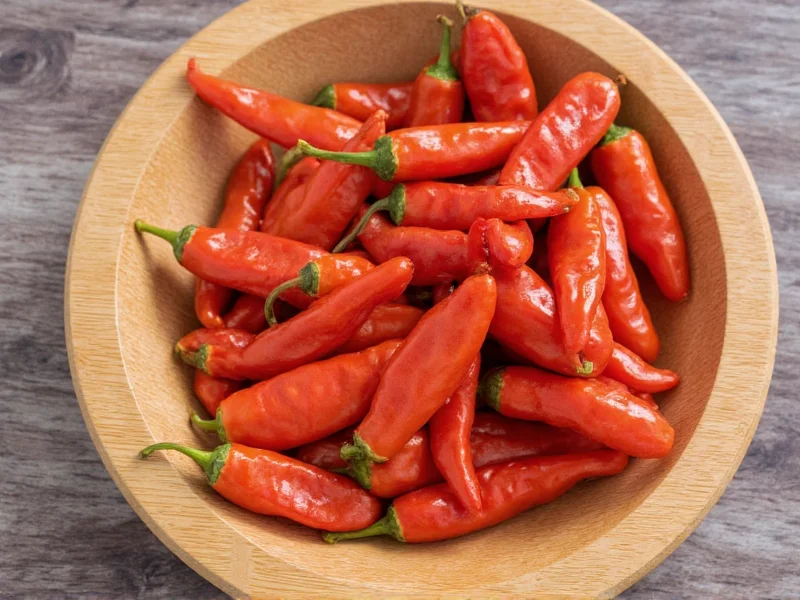When your chili turns out hotter than expected, knowing how to make chilli less spicy can save your meal. The capsaicin in chili peppers—the compound responsible for heat—binds to receptors in your mouth, creating that burning sensation. The good news is several scientifically backed methods can neutralize or balance this heat without ruining your dish.
Understanding Spiciness in Chili
Capsaicin is oil-soluble and alkaline, which explains why certain remedies work better than others. Water won't help—it spreads the oil rather than dissolving it. Effective solutions target capsaicin's chemical properties through fat absorption, acid neutralization, or dilution.
Proven Methods to Make Chilli Less Spicy
Dairy-Based Solutions
Dairy products contain casein, a protein that breaks down capsaicin. This is why milk helps after eating spicy food. For chili:
- Add 1/4 cup of full-fat yogurt, sour cream, or cream
- Stir in 2-3 tablespoons of butter or cheese
- Use whole milk instead of water if thinning your chili
These how to tone down spicy chili immediately techniques work within minutes as casein binds to capsaicin molecules.
Acidic Counteragents
Acids neutralize the alkaline capsaicin. The best quick fixes for too spicy chili include:
- Fresh lime or lemon juice (start with 1 tablespoon)
- Vinegar (apple cider works well)
- Tomato paste or crushed tomatoes
Add acid gradually while tasting—too much can make your chili sour. This method works particularly well for balancing spiciness in chili recipe without losing flavor complexity.
Sweetness to Balance Heat
Sugar counteracts spiciness by binding to the same receptors as capsaicin. Try these approaches:
- 1-2 teaspoons of brown sugar or honey
- Shredded carrots (they release natural sugars when cooked)
- 1/4 cup of corn or sweet potatoes
Sweet elements create a flavor bridge that makes the heat more manageable while enhancing the overall profile of your chili.
| Method | How Much to Add | Time to Work | Flavor Impact |
|---|---|---|---|
| Dairy (yogurt/sour cream) | 1/4 cup per 4 servings | Immediate | Creamy, rich |
| Acid (lime juice/vinegar) | 1 tbsp per 4 servings | 2-3 minutes | Bright, tangy |
| Sugar/honey | 1-2 tsp per 4 servings | 5 minutes | Sweet balance |
| Dilution (beans/tomatoes) | 1 cup per 4 servings | 10-15 minutes | Subtle change |
What NOT to Do When Fixing Spicy Chili
Avoid these common mistakes when trying to make chili less spicy:
- Don't add more chili peppers—this seems counterintuitive but some suggest it to "balance" heat, which only makes it worse
- Avoid excessive water—it dilutes flavor without reducing heat effectively
- Don't use alcohol—it can intensify the burning sensation
- Don't rush the process—allow time for ingredients to integrate (at least 10 minutes simmering after adjustments)
Preventing Overly Spicy Chili Next Time
The best way to reduce heat in chili is prevention. Follow these tips:
- Remove seeds and white membranes from peppers—they contain most capsaicin
- Add peppers gradually, tasting as you go
- Use milder pepper varieties like ancho instead of habanero
- Create a flavor profile with multiple elements (sweet, acidic, umami) to balance heat
Understanding how to fix overly spicy chili before it happens saves time and ingredients. Remember that heat intensifies as chili simmers, so start with less spice than you think you need.
When All Else Fails: Creative Solutions
If your chili remains too spicy after standard fixes, consider repurposing it:
- Use as a spicy sauce for tacos or nachos
- Mix with plain ground beef for stuffed peppers
- Freeze portions for future use as a flavor booster
Sometimes the best methods to make chili less spicy but still flavorful involve reimagining how you'll serve it rather than trying to completely eliminate the heat.
Frequently Asked Questions
Can I use coconut milk to reduce chili spiciness?
Yes, coconut milk works effectively as a dairy alternative. The fat content binds with capsaicin, reducing heat while adding a subtle sweetness. Use full-fat coconut milk for best results—start with 1/4 cup per 4 servings and simmer for 10 minutes.
How long does it take for sugar to reduce chili heat?
Sugar begins counteracting spiciness immediately upon dissolving, but needs 5-7 minutes of simmering to fully integrate. Start with 1 teaspoon per 4 servings, then gradually increase while tasting. Brown sugar works better than white sugar due to its caramel notes that complement chili flavors.
Will adding potatoes really make chili less spicy?
Yes, starchy ingredients like potatoes, beans, or rice absorb capsaicin oil. Dice potatoes small (1/2 inch cubes) and simmer for 15-20 minutes until tender. They'll reduce heat while adding heartiness. Remove some potatoes after simmering if you've achieved the desired spice level to prevent over-dilution.
Can I fix spicy chili without changing the flavor profile?
The best approach to fix overly spicy chili without changing flavor is gradual dilution. Add equal parts of your base ingredients (like tomatoes, beans, or meat) without additional spices. This maintains the original flavor balance while reducing heat concentration. For immediate fixes that preserve flavor, dairy solutions like sour cream work best with minimal flavor alteration.
Why does my chili get spicier as it cooks?
Chili often becomes spicier during cooking because heat extracts more capsaicin from peppers over time. The liquid also reduces, concentrating flavors and heat. To prevent this, add peppers later in the cooking process and avoid over-reducing your chili. If it's already too spicy, adding liquid (broth or tomatoes) can help dilute the concentrated capsaicin.











 浙公网安备
33010002000092号
浙公网安备
33010002000092号 浙B2-20120091-4
浙B2-20120091-4